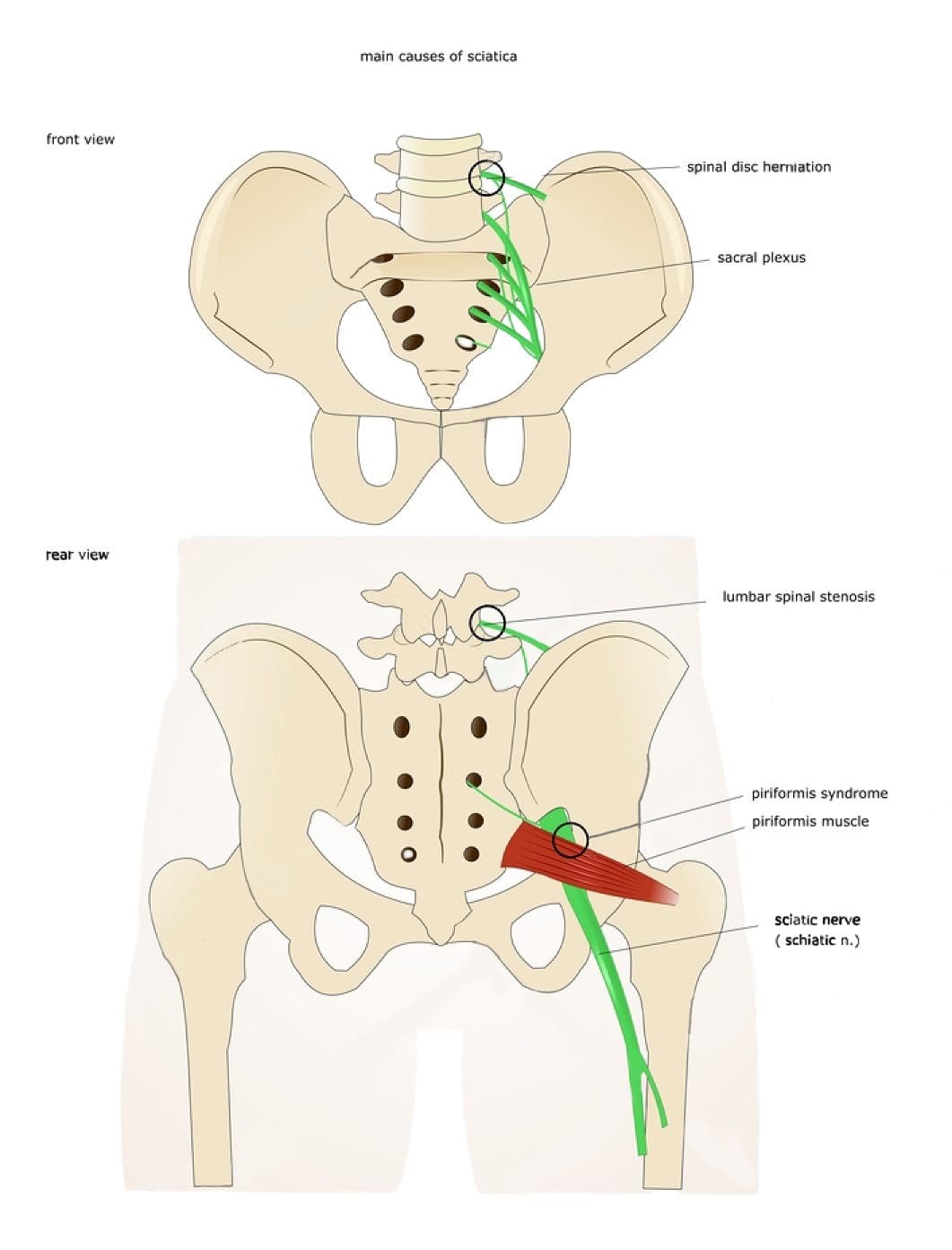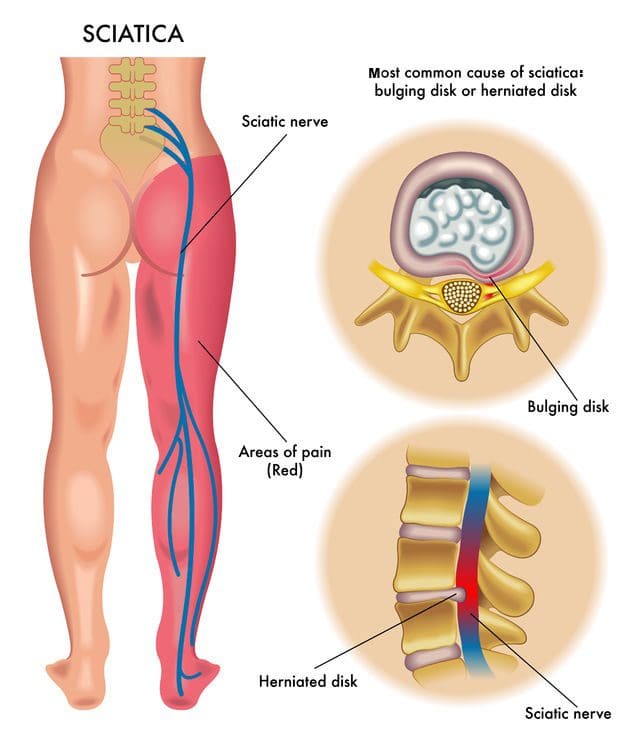Experiencing foot pain, there's no doubt you checked out your foot to make sure it's not injured or hurting from improper fitting shoes, corns, plantar fasciitis, etc. This may seem counterintuitive, but you may want to check the condition of the lumbar spine (lower back)? Most foot problems are caused from issues with the foot itself, but you might be surprised to find that pressure on the sciatic nerve can cause intense foot pain.
Sciatic Nerve Pain
The sciatic nerve is the largest nerve in the body and consists of five nerves that come together at the lower spine and then extend all the way down the back of the legs into the toes. If the lumbar spine is compressed, it presses on the sciatic nerve, thus causing radiating pain down the leg and sometimes all the way into the big toe. Foot pain without leg pain is often due to an issue located within the foot. However, it is possible that the foot pain could be the only symptom of sciatica.
Sciatica can be caused by lumbar spine disc herniation, lumbar spinal stenosis, and spondylolisthesis. There are various types of sciatica, which present differently according to which spinal disc is affected. If the L5 disc is compressed, Foot Drop can occur. This refers to the heavy, weak feeling that makes flexing the foot almost impossible. Foot Drop usually results in pain radiating down along the outside of the leg, crossing over the foot and into the big toe. If the S1 nerve root is affected, the pain is likely on the sole of the foot. An accurate diagnosis is first priority in order to address the pain correctly and properly.
What To Do About The Foot Pain

Addressing the root of the problem is most important. Nearly three million people a year suffer from sciatic pain along with other dysfunctions. An experienced chiropractor or physician will demonstrate exercises to help lengthen and stretch the spine. This along with massage, acupuncture, and medication are all helpful in the management of sciatic pain. The foot pain will be addressed by a doctor or chiropractor who will to tell which treatment is most effective for the situation.
Treatment for foot pain varies depending on the condition/injury. Treatment can go from rest and ice to physical therapy, chiropractic and in severe cases surgery. Reflexology can provide relief, as well as, stretching exercises. Over the counter pain medication is often used. If the pain is too intense that it prevents sleep, a physician may prescribe non-addictive pain medication. Wear shoes with good arch supports, and if pain persists, see a podiatrist for special orthotic shoe inserts. Insurance often covers orthotics.
Further Considerations

Don’t forget that most pain in the body is caused from inflammation and can be helped with anti-inflammatory diet and lifestyle stressors. Concentrate on eating whole, unprocessed foods. Stay away from sugar, alcohol, artificial sweeteners, and white flour. Make sure to drink enough water every day, and get eight hours of sleep. This is one of the most effective ways to address inflammation. Bring the body back into balance.







